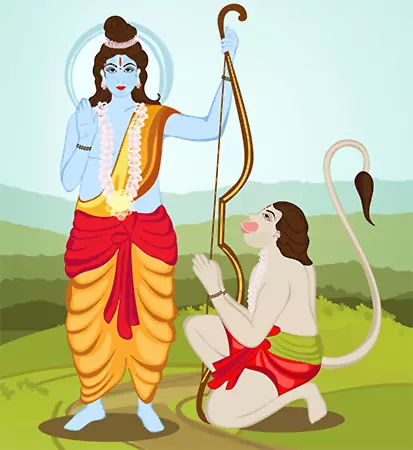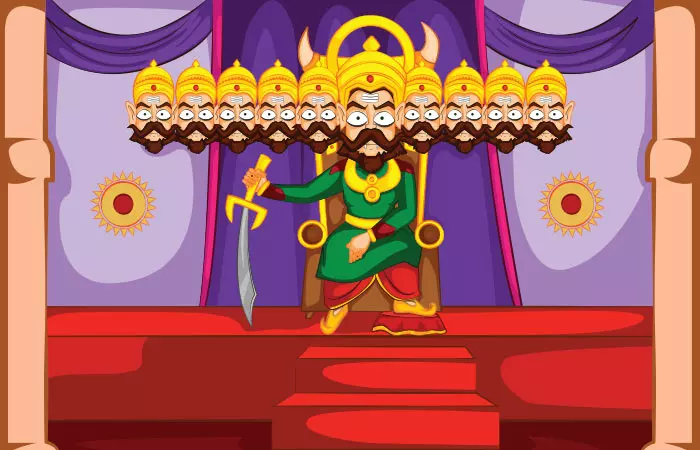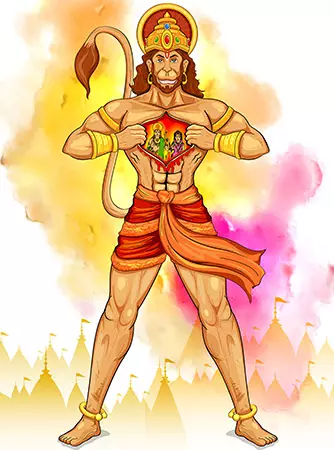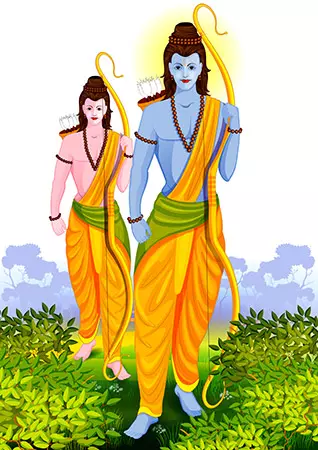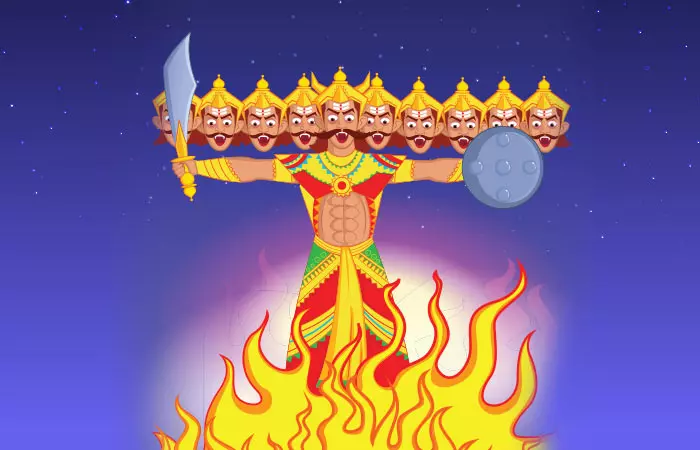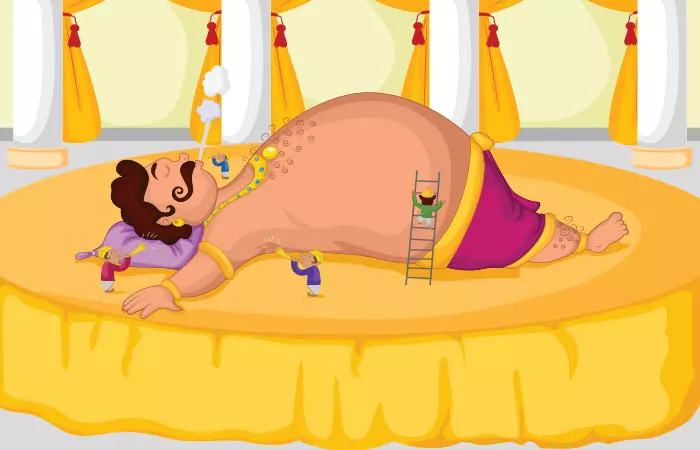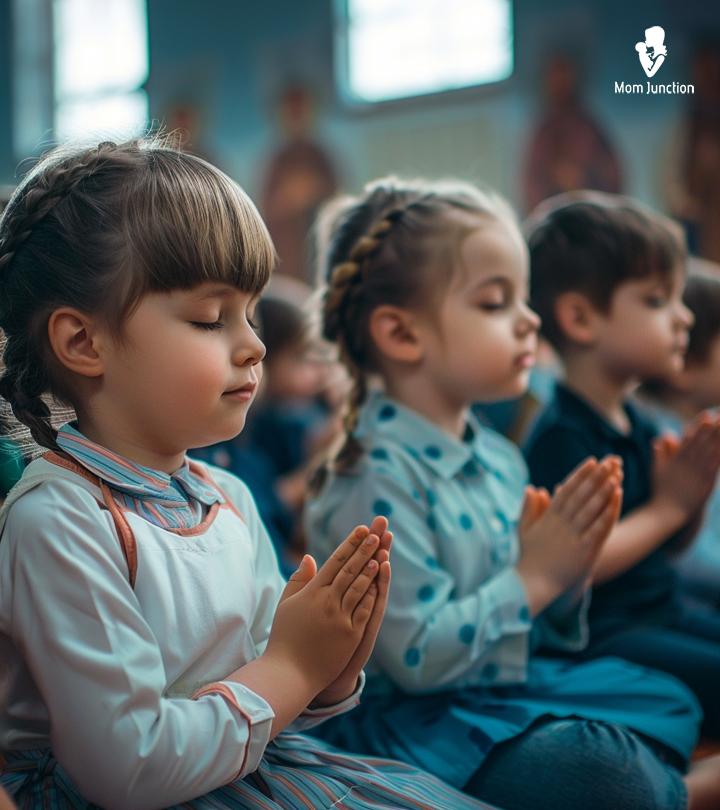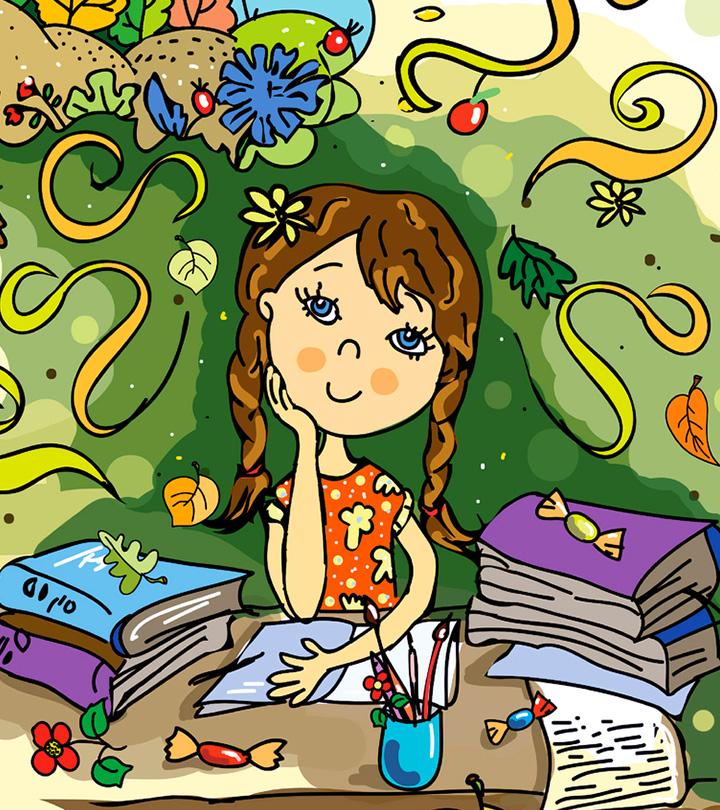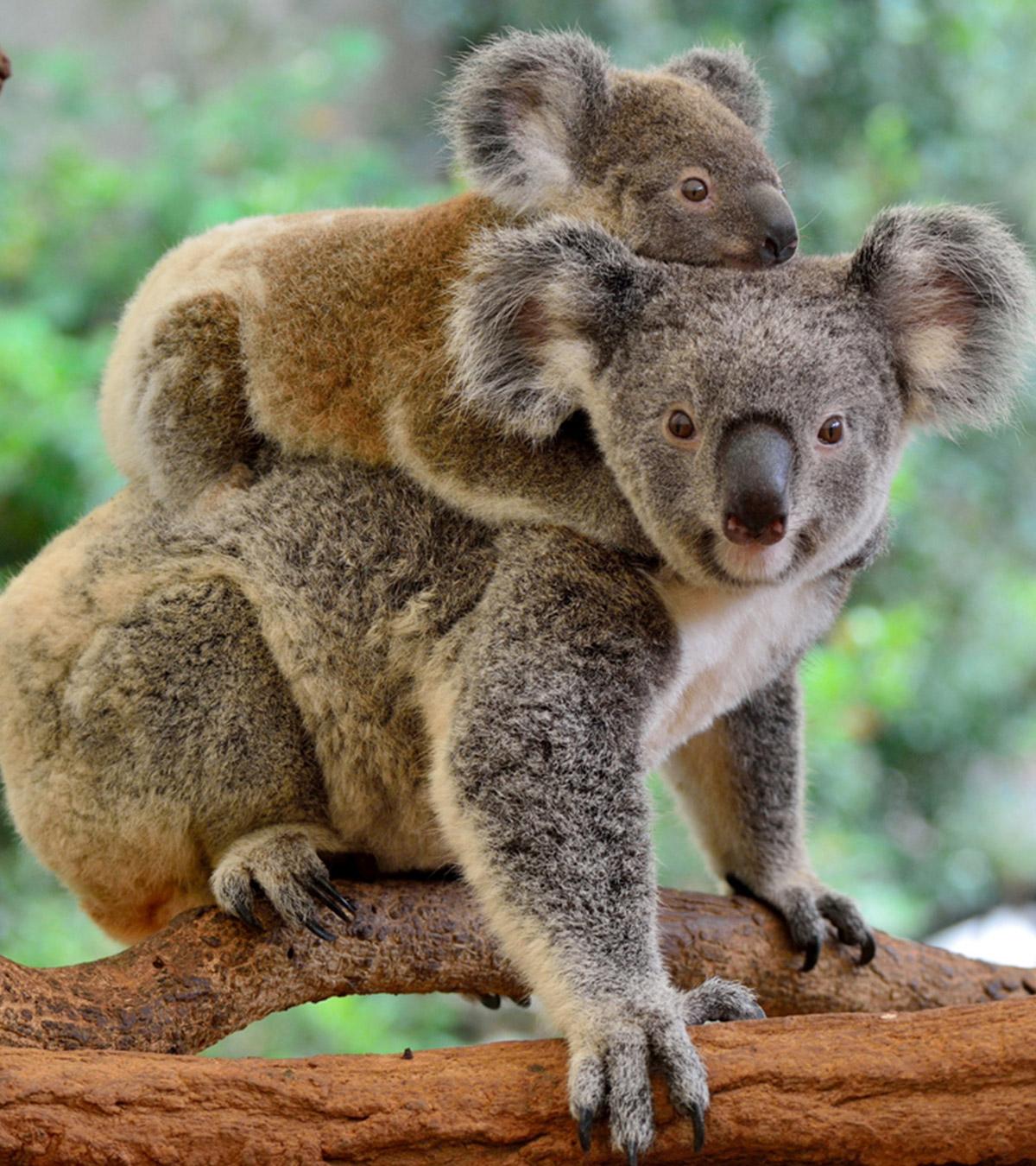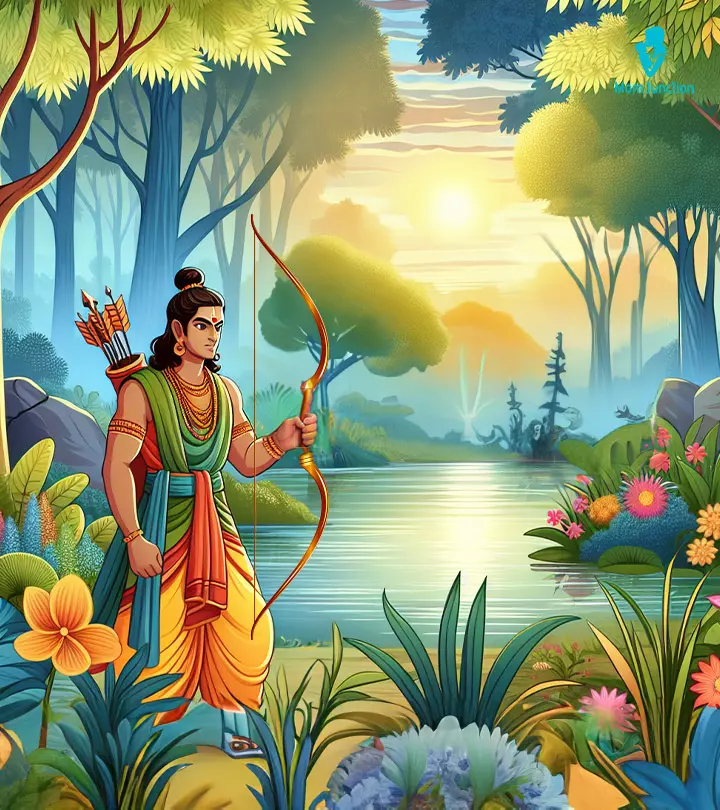
Image: Midjourney/ MomJunction Design Team
Valmiki, a reformed robber, wrote the Ramayana, one of the grandest epics of Good vs. Evil. It’s the tale about how Lord RamaiThe central character in the Ramayana, considered an incarnation of Lord Vishnu fought the demon king RavanaiThe main antagonist in the Ramayana, a demon king to rescue his wife, Sita. The Ramayana teaches us the true meaning of devotion, love, Karma, DharmaiThe moral and ethical principles of Hinduism , valor, and relationship.
The epic was first handed over to Lord Rama’s children and has been handed down from generation to generation. And if you are looking to acquaint your little one with the Ramayana, here are a few short stories to give the kids a sneak peek into the world of Lord Rama, Sita, Hanuman, and Laxman! We are sure the kiddies will love these stories. In this post, we bring you interesting short stories from Ramayana for kids. You may share or read them to your kids and see their faces light up in awe.
16 Inspirational Ramayana Stories
Ramayana is not just an epic but a treasure trove of wisdom that imparts moral values and lessons through its characters and events. Here are some captivating stories to entertain your children and enrich their understanding of good values.
1. The Story Of A Squirrel:
After the abduction of Sita, Lord Rama along with this army of monkey and bears starts making a bridge over the sea that would connect them to LankaiThe island kingdom of Ravana in the Ramayana . Lord Rama was triumphant to see the passion, dedication and energy level of his army towards the construction of the bridge. A little squirrel was picking up a pebble in her mouth and putting it near the boulders. She did it repeatedly and effortlessly.
Just then, a monkey noticed her and started making fun of her. He told her to stay away lest a boulder crush her. Hearing this, everyone started making fun of her. The squirrel was in tears. Lord Rama was noticing all this from a distance.
Upset, the squirrel went to Lord Rama and complained about everyone to him. Lord Rama then demonstrated to the Army how the pebble thrown by the squirrel has worked as the connector between the two boulders. Even her contribution is as valuable as the other members of the army.
Acknowledging the squirrel’s effort, Lord Rama stroked the squirrel’s back. The stroking left the marks of his finger on the body of the squirrel. Since then, the squirrels have carried white stripes on their body. This is one of the interesting short stories from Ramayana for children.
2. When Hanuman Refused To Obey Lord Rama:
Lord Hanuman was morose after the coronation ceremony. He sat in the corner, meditating on Lord Rama with closed eyes. Tears were flowing incessantly from his eyes.
Sita noticed and informed Lord Rama at once about it. Rama went near to Hanuman and said, “I couldn’t give you anything in return for your BhaktiiDevotion to a God as a means to attain salvation in Hinduism and Devotion. The only thing I can do is take you along with me to VaikuntaiThe ultimate destination for souls in Hinduism ”. Hanuman asked, “Will you be there with me in Vaikunta” to which Lord Rama replied, “yes, but not as Rama, but as Lord MahavishnuiOne of the three major deities of the Hindu triad, considered the preserver of the universe .” Lord Mahavishnu is the cause, and Lord Rama is the effect’.
Hanuman replied, “I wouldn’t go to a place where Lord Rama isn’t present. I will stay back in AyodhyaiA city in northern India, the birthplace of Lord Rama and will continue meditating on Lord Rama”.
3. The Story Of Shanta, Rama’s Sister:
Before the birth of Lord Rama, King Dashrath had a daughter named Shanta. Kaushalya’s elder sister Vershini had no offspring. Once, when Vershini came to visit her sister, she flippantly asked for her child. Hearing this, Dashratha agreed that she could adopt his daughter, Shanta. It’s belived that Lord Rama and his other brothers were not told about their sister.
4. The Story Behind Ravana’s 10 Heads:
Ravana was a devout follower of Lord ShivaiOne of the three major deities of the Hindu triad, known as the destroyer and transformer . After attaining the education, Ravana underwent an intense penance to please Lord Shiva. To appease Lord Shiva, Ravana even chopped off his head. Each time he chopped off his head, it grew back, thereby enabling him to continue his penance. This austerity of Ravana pleased Shiva, and he granted him ten heads. And thus, he became one of the most powerful beings on the earth. The ten heads of Ravana indicate the four Vegas and six shashtras that Ravana mastered. It can be the best story for kids to know about the great epic Ramayana.
 Quick tip
Quick tip5. The Birth Of Hanuman:
Lord Hanuman, one of the incarnations of Lord Shiva was born to Anjana by the blessings of Vayu, who later became Hanuman’s godfather. When Anjana was praying to Lord Shiva for her son, King Dasharath was also performing a Yagna to have children. He received a bowl of sacred pudding from the God of Fire to share amongst his three wives. By divine order, an eagle snatched some of the pudding and dropped where Anjana was meditating. Vayu, the deity of wind, transported the fragment of the dessert to Anjana’s hands, who ate it. Lord Hanuman was born soon after.
6. Was Sita The Daughter Of Mandodari?
This may come as a surprise to most of you, but Adbhuta Ramayana states that Mandodari was the mother of Sita. After killing the sages, Ravana would keep their blood in a large pot. Sage Gritsamada was a devout follower of Goddess Lakshmi. He even practiced penance to attain Goddess Lakshmi as his daughter. After storing the milk from the Darbha grass in a pot, he purified it with chants, expecting Lakshmi to dwell in it. But Ravana sneaked into Gritsamada’s house and poured the milk into his pot.
Mandodari was very frustrated with the evil deeds of Ravana, So she decides to commit suicide by drinking the blood that Ravana had stored in the pot. Instead of dying, Mandodari gets pregnant with Sita, one of the incarnations of Lakshmi, all because of the milk. She leaves the baby in Kurukshetra, only to be found by Janaka.
7. Death Of Lord Rama:
It wasn’t possible for Lord Rama to die because Hanuman wouldn’t allow YamaiThe god of death and justice in Hinduism to claim Rama’s soul. To divert the attention of Hanuman, Ram dropped his ring through a crack and asked Hanuman to fetch it for him. Hanuman reduced himself to the size of a beetle and entered the crack only to find himself in the serpent’s land. He asked Vasuki, the king of the Nag Lok for the ring. The king showed him a dome filled with rings, all belonging to Ram. Hanuman was baffled seeing this. Then the king informed him that Ram deliberately dropped down the ring to divert his mind from Lord Rama’s death.
8. When Ram Issued A Death Sentence To Hanuman:
Narada could not stand the harmony in the kingdom after Lord Rama took over his father’s place as the king. So he tried to create differences between Hanuman and Ram. When the sages appeared in the court, Narada tricked Hanuman to greet all the sages except VishwamitraiA sage in Hindu mythology known for his power and knowledge , as he was not a sage by birth. Hanuman did as suggested, which did not bother Vishwamitra initially.
But following the instigation of Narada, Vishwamitra became all charged up and asked Lord Rama to issue a death sentence to Hanuman. Being the disciple of Vishwamitra, Rama could not contradict Vishwamitra’s command and ordered Hanuman’s execution by arrows. The statement of execution was also issued the next day. But none of the arrows could harm Hanuman.
Lord Rama then used the Brahmastra, his most powerful weapon. But even Brahmastra failed before Hanuman. Do you know why it happened? Because Hanuman kept chanting Lord Rama’s name. Narada realized his mistake and pleaded with Vishwamitra to stop the war.
9. Do You Know How Bajrangbali Got The Name?
One day, when Sita was applying vermilion on her forehead, a curious Hanuman asked, “Why do you apply vermilion.” Sita replied “for longer and healthier life of Lord Rama.” The enthusiastic Hanuman smeared his entire body with vermilion. Lord Rama burst out into laughter seeing Hanuman smeared in Vermilion. He named him ‘Bajrangbali’, which comes from the word Bajrang, meaning ‘orange.’
10. Rama’s Brothers:
Lord Rama, as most of us know, is the incarnation of Vishnu, but what about his brothers Laxman, Bharat and Shatrughan? Bharat and Shatrughan are the Sudarshan-Chakra of Lord Rama, and Vishnu is his Shesh-Naag, Vishnu’s seat in Vaikunth.
Laxman was later born as Balram, Lord Krishna’s elder brother. Laxman had complained all his life that being born as the younger brother he has to obey all the commands of Ram. His wish to be an older brother was fulfilled when he was born as Balram.
11. Laxman Defeating Sleep For 14 Years:
Urmila, Laxman’s wife, was ready to accompany him when he was leaving for exile, but Laxman forced her to stay home. Laxman wanted to protect Ram and Sita from all the dangers, defeating sleep. So he approached Nindra, the Goddess of Sleep and asked her to look over him for the next 14 years. Nindra commanded that someone had to sleep on behalf of him to create a balance. So Laxman asked her to consider Urmila for this. Nindra went to the palace of Ayodhya and asked Urmila if she would like to take up Laxman’s sleep, to which she gladly agreed.
Urmila slept for 14 years, until the day of Ram’s coronation. If Urmila had not helped, Laxman would have never been able to slay MegnathiThe warrior son of Ravana and a character in the Ramayana , the one who was granted a boon that only GudakeshiAnother name for Arjuna, one of the five Pandavas in the Mahabharata could kill him. It can be one of the best stories from Ramayana for children.
12. Surpanakha, The Stimulus Of The Battle Of Lanka:
Most accounts of Ramayana suggest that Surpanakha, Ravana’s sister, had no interest in Rama. But Valmiki’s Ramayana accounts that Surpanakha approached Rama, but he rejected her for Sita. Soorpnakha then proposed to Laxman, but even he rejected her. Angered by the rejection, Surpanakha tried to hurt Sita. Fearing Sita’s life, Rama told Laxman to chop off her ears and nose. To seek revenge, Surpanakha induced Ravana to kidnap Sita, which triggered the battle.
But other accounts suggest that Surpanakha enticed Ravana to kidnap Sita to avenge her husband’s death. Surpanakha was first married to Dushtabuddhi Rakasha, who enjoyed great favors from Ravana, But his greed for more enraged Ravana and he had him killed. Distraught by the death of Dushtabuddhi Rakasha, Surpnakha realized that only Rama could kill Ravana. So, when Laxman chopped off her nose, she provoked Ravana to kidnap Sita as an act of revenge. This is an ideal Ramayana story for children.
13. When Ravana Deposited His Soul:
Before fighting the battle with Rama, Ravana gave his soul to a hermit called the Fire-Eye. The Fire-Eye was supposed to keep his soul safe and secure. In the battle, Rama was surprised that the arrows struck Ravana, but did not wound him. Only one of the allies of Rama knew the secret behind it. So he transformed himself to resemble Ravana and went to the hermit, asking for the soul. No sooner the soul was set free, Rama slayed Ravana.
14. Kubera, The Real Ruler Of Lanka:
Lord BrahmaiOne of the three major deities of the Hindu triad, considered the creator of the universe had produced ten mind-born sons or Prajapatis while creating the Universe and Sage Pulatsya, Vishrava’s father was one of them, RishiiA sage or a wise man in Hinduism and Yoga philosophy Bhardwaj was totally mesmerized by Vishrava and even offered his daughter Ilavida for marriage. Ilavida and Vishrava gave birth to Kuber, the Lord of Wealth.
But Tataka and Sumali also wanted Kaiseki, their daughter, to marry Vishrava to increase their powers through alliances with kings and Rishis. They even planned their meeting. Vishrava fell in love with Kaiseki and fathered Ravana.
Kubera inherited Lanka from his father, Vishrava. Being a good son, he even shared all his wealth with his half-brother Ravana. But after receiving all kinds of boons from Brahma, Ravana overthrew Kubera from Lanka.
15. The Story Of Kumbhkaran’s Sleep:
Once, brothers Ravana, Kumbhakaran, and Vibhishan were asked what boon they wanted from Brahma. Indra, on the other hand, was well aware of Kumbhakaran’s valor and wit and knew that he would ask from the Indrasan, the Kingdom of Heaven. Fearing this, Indra requested Goddess Saraswati to tie Kumbhakaran’s tongue, which bound Kumbhkaran to ask for the eternal Nindrasan. Brahma granted him the boon of eternal sleep.
Seeing his brother’s plight, Ravana pleaded with Brahma to undo the curse. Brahma did undo it but with a condition. He said that Kumbhakaran would sleep for half a year and would stay awake for another half. Even during the Battle of Lanka, Kumbhakaran was asleep and was walked over by a thousand elephants in an attempt to wake him up. It can be one of the best and most interesting stories from Ramayana for children.
16. The Victory Of Ram Over Ravana:
Towards the end of the battle, Ravana organized a Yajna to assure his victory. The only condition was that Ravana could not move out of the Yajna. When Rama got to know about it, he sent a group of monkeys along with Angada to destroy the Yajna. Angada and the monkeys tried their best to divert Ravana’s attention but were unsuccessful. To grab Ravana’s attention, Angad dragged Mandodari’s by her hair right in front of Ravana. But Ravana was indifferent. Mandodari pleaded with Ravana to save her. She even taunted her by giving her the example of Ram and Sita. Her words moved Ravana, and he left the Yagna. These Ramayana short stories for kids explain the victory of Ram over Ravana.
These short stories are a great way to introduce children to mythology, Hinduism, heroism, morality, values, and Indian culture. The morals and lessons taught in these mythological stories for kids are still relevant today and can help children develop a sense of right and wrong.
Frequently Asked Questions
1. What lesson does Ramayana teach children?
Ramayana emphasizes the value of loyalty, the triumph of good over evil, and the significance of duty and righteousness. It highlights the importance of family and teaches children to obey their parents in every situation. The epic also highlights the ill effects of selfishness and shares how one should control temptations. Above all, Ramayana teaches children to respect everyone and value every resource and person around them.
2. Who were the main characters in the story of Ramayana?
From Ram and Sita to king Dashratha, Laxman, Hanuman, and Ravan, Ramayana has many characters, and every character teaches you some or other life lesson. Reading Ramayana stories can give children and adults wisdom that can help them be righteous, compassionate, empathetic, obedient, respectful, and courageous.
3. What happens during the battle between Lord Rama and Ravana?
During the battle between Ram and Ravana, Ram fires golden arrows at Ravana, which turn into serpents as they reach him. Although they cut off Ravana’s heads, they grew back again. This fight continues for days till Matali, Rama’s charioteer, suggests to Rama that he shoot the arrow of Brahma given by Agastya to kill Ravana. Rama then shoots this arrow which strikes Ravana’s heart and kills him.
4. What lessons can children learn from the character of Lord Rama in the Ramayana?
Children learn about giving respect to parents, loyalty, being trustworthy, and a commitment to duty from Lord Rama’s. He exemplifies ethics and ideals. Lord Ramaa’s life emphasizes being humble, not being afraid of challenges in life, and standing by your people and family.
5. How does Lord Rama’s exile impact the story of the Ramayana?
Lord Rama’s exile happens because of Kaikayi, her stepmother. This exile came at a time when Rama was to take the throne. But he chose to accept his exile because duty and loyalty to his parents were the most important to him. The period of his exile had Rama witnessing various challenges and hardships. But he faced all of them fearlessly.
All the short stories from Ramayana for kids listed above help teach your children about this great epic and Lord Rama. They are also inspirational and motivating and will assist in imparting good teaching and vital life lessons in them. Whether it’s “The Story of The Squirrel,” “The Story Behind Ravana’s 10 Heads,” “Rama’s Brothers,” or “The Story of Kumbhkaran’s Sleep,” these Indian mythological stories for kids will undoubtedly help them learn about the great epics. So, take a break from your busy schedule to read them to your children or use them as bedtime stories.
Key Pointers
- The Ramayana is a Hindu epic that teaches valuable lessons about relationships, duty, and righteousness.
- The story of the squirrel can help children learn the essential lesson of inclusivity, as it teaches that even the smallest contribution matters.
- The tale behind how Lord Hanuman got the name ‘Bajrangbali’ can introduce children to Hanuman’s unwavering love and faith for Shri Ram.
- The implausible story about how Lakshman’s wife took up his sleep for 14 years teaches children about the love that family members share.
- These tales help children understand the untold stories of famous mythological characters like Rama, Sita, Hanuman, and Ravana.
Community Experiences
Join the conversation and become a part of our nurturing community! Share your stories, experiences, and insights to connect with fellow parents.
Read full bio of Visti Larsen
Read full bio of Debolina Raja
Read full bio of Harshita Makvana
Read full bio of Praggya Joshi





